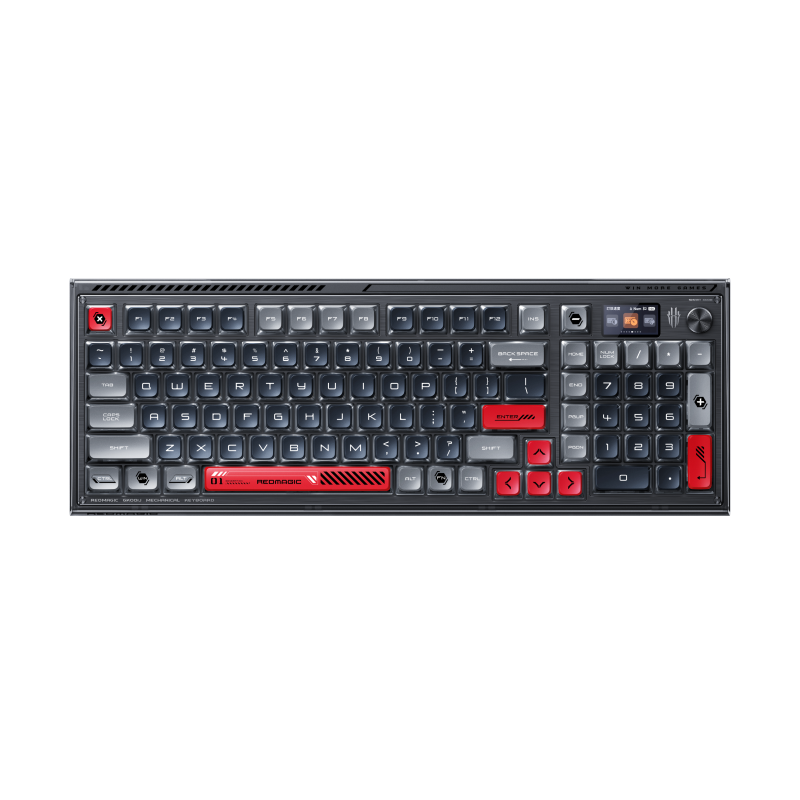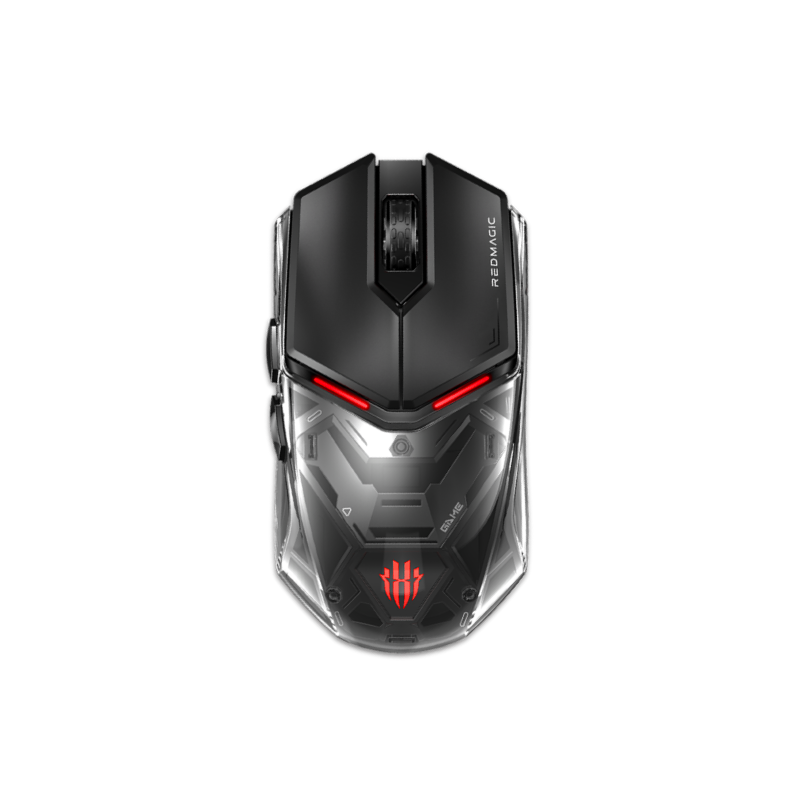
The transparent back design of the 'Supernova' edition hints at some of the parts powering the Red Magic 7 Pro.
The Red magic 7 pro is here and builds on the successes of its non-Pro sibling that launched in February, earlier this year. Besides carrying most of its predecessor's key features like the Qualcomm Snapdragon 8 Gen 1 processor, a transparent back design, and side-mounted shoulder triggers, the Red magic 7 pro introduces some new tech that elevates the mobile gaming experience.
I've been testing the $899 Red magic 7 pro over the past two weeks, daily driving it alongside my iPhone 13 Pro. And while I wouldn't go as far as to say that the device is capable of being a regular smartphone -- its middling cameras are impractical -- the 7 Pro is very much one of the most complete gaming phones that I've gotten my hands on.
When it comes to gaming phones, speed is the name of the game. Exploring the Red magic 7 pro's spec sheet, you'll find numbers that rival the most expensive configurations of mainstream smartphones. That includes 16GB of RAM (18GB on my review unit), a 5,000mAh battery, the latest Snapdragon processor, and a 120Hz AMOLED display. See below for the specifications roundup.
Design
About two weeks ago when I reviewed the Black Shark 4 Pro, I said that it looked more like a traditional phone than one made for gaming. With the Red magic 7 pro, my sentiment is the complete opposite. The RedMagic looks and feels like a device that would be in the hands of Tony Stark or one who operates the USS Enterprise. The main appeal here is the see-through finish of the Red magic 7 pro's Supernova variant. Even if I didn't list out the specs above, you wouldn't have a problem finding out what's under the hood of this phone thanks to the bounty of marketing jargon and feature labels underneath the transparent backing.
That said, this blend of metal and glass creates a rather heavy body, a trade-off that you may want to think twice about when buying a gaming phone. The Red magic 7 pro weighs in at 235 grams (0.5 lbs) and the flat-edged design doesn't help in making it any more wieldy. In a way, the phone feels a lot like the iPhone 12/13 Pro Max. But instead of the satin, monotone backing, you get an array of edgy designs, ports, and vents.
That's right, the Red magic 7 pro has a total of four vents surrounding the edges and back of the device, in order to dissipate heat when running graphics-intensive tasks. Take a closer look at the phone and you'll notice a small but mighty 20,000 RPM Turbofan. A part of RedMagic's ICE 9.0 cooling system, the Turbofan automatically revs up whenever you open up a game or charge the device. While effective in managing battery consumption and overheating, this creates the first inevitable drawback of the phone: No water and dust resistance.
Besides the RGB fan and ventilation, there are two gaming-centric features built along the railing of the Red magic 7 pro: Shoulder triggers and a 3.5mm headphone jack. The former is not retractable, or physical at that. But with one on the top and bottom of the phone, you gain accessible and highly advantageous inputs when gaming. More on button mapping later.
On the front is a massive 6.8-inch AMOLED display, refreshing at 120Hz. While not 165Hz like the original RedMagic 7, the jump from 60Hz to 120Hz is much more noticeable than 120Hz to anything higher. This Goldilocks of a refresh rate means scrolling through the web, game menus, and the overall animations are buttery smooth.
Not to be mistaken with refresh rate, the Red magic 7 pro also has a 960Hz multi-finger touch sampling rate, for an added degree of input accuracy. Though less useful for daily tasks, that number provides a competitive advantage in fast-scrolling games, where the rate at which you tap the screen can spell victory or defeat.
Another display feature is the under-display camera (UDC). By using a tripod pixel arrangement, the same tech that powers the selfie camera of the Samsung Galaxy Z Fold 3 and ZTE Axon 20 5G, the Red magic 7 pro has a true distraction-free display. This also makes it the first gaming phone to use a UDC, which befits the immersion that mobile gamers seek. While practical when not in use, I found the front-facing camera to be very underwhelming with picture-taking. This shouldn't come as a surprise, given the intricacies of embedding a camera under panels of pixels and how new this tech is. I applaud REDMAGIC for taking the leap.
Software
The Red magic 7 pro runs on RedMagic OS 5.0 based on Android 12. For one, that's a significant improvement from the majority of gaming phones that still run on Android 11 in 2022. What's not so different is the assortment of UI tweaks, features, and themes that tailor more towards gamers than average consumers. From the wallpapers to the icon packs, you can expect more sci-fi-inspired aesthetics than nature and material designs.
That's not to say that the software experience is bad by any means. I found RedMagic OS 5.0 very approachable and easy to maneuver around. Animations flow naturally across the screen, the notification panel is familiar, and with every new software feature comes a one to two-line explainer. At boot up, the phone had minimal bloatware atop the standard Google suite of apps.
As someone who prefers the clean, stock Android feel and finish, RedMagic OS 5.0 is not that. But weeks into using it, I'm starting to wish that more of its features were available across non-gaming phones.
Performance
The original RedMagic 7 was among the first smartphones to operate on Qualcomm's new Snapdragon 8 Gen 1 chipset, and the Pro follows suit. With one of the most powerful SoCs, here's how the Red magic 7 pro stacks up against competing phones in synthetic benchmark tests.
Overall, the Red magic 7 pro performs exceptionally well across Geekbench 5 and 3DMark assessments. These are controlled and simulated use-cases and don't reflect entirely on how the phone fares in reality. But it's good to see that even at its limit (see 3DMark Wild Life Extreme score), the Red magic 7 pro bests that of the Black Shark 4 Pro and Samsung Galaxy S22 Ultra with a score of 2,606.
From my personal testing, the Red magic 7 pro operates my day-to-day activities like social media browsing, video streaming, emailing, and gaming, with ease. This didn't come as much of a surprise as my review unit had a whopping 18GB of RAM. The new OnePlus 10 Pro has 8GB of RAM, for your reference. Naturally, apps and videos loaded with haste, games were playable in the highest graphics settings, and memory management was a non-issue.
These chairs will add support, comfort, and style to your gaming setup.
Ultimately, how well does this phone handle gaming? Over the two weeks of testing, I paced the Red magic 7 pro through countless rounds of Call of Duty: Mobile, Genshin Impact, Asphalt 9, and Fortnite. Pleasantly, the phone handled the elite four mobile games like a champ. More often than not, the Red magic 7 pro maintained graphics at 60 frames per second (FPS), and whenever the device felt hot to the touch, the in-body Turbofan kicked into high gear to cool it down. That's on top of the existing vapor chamber plating within the device. Alternatively, you can snap on an external fan to keep the temperatures down.
The mobile gaming experience is also elevated by the side-mounted shoulder triggers, with a 500Hz touch sampling rate. Through RedMagic's gaming hub, Game Space, you can map where on the screen you want left and right shoulder triggers to register. For example, I set the left trigger as aim and the right as fire in Call of Duty. Since the layout of these in-game buttons vary across titles, RedMagic lets you set mapping profiles within Game Space, a nifty feature that's not prevalent on competing phones.
Besides mapping the shoulder triggers, Game Space serves as an overlap atop any game you play. On it, you can learn about your connection, GPU speeds, and battery levels, and be able to manage incoming notifications. (You can't climb the leaderboards with email pop-ups in the way, right?) There are two ways to activate Game Space: Clicking the dedicated button (in red) on the left side of the phone or swiping in from the upper edges when in-game.
Lastly, I'd like to make note of the haptics on the Red magic 7 pro. They are satisfyingly clicky and free of the loose buzzing that often plagues cheaper motors. REDMAGIC accredits the quality of its haptics to its Red Core 1 gaming chip, a separate processor from the Snapdragon that strictly handles audio, RGB lighting, and vibration performance. While I'm unsure what kind of black magic marketing this is, the phone produces undeniably pleasing feedback -- a blessing for any mobile gamer.

















